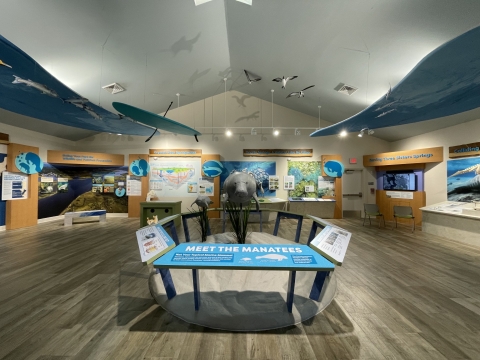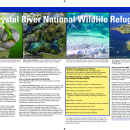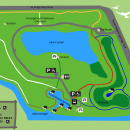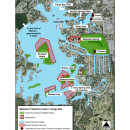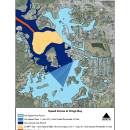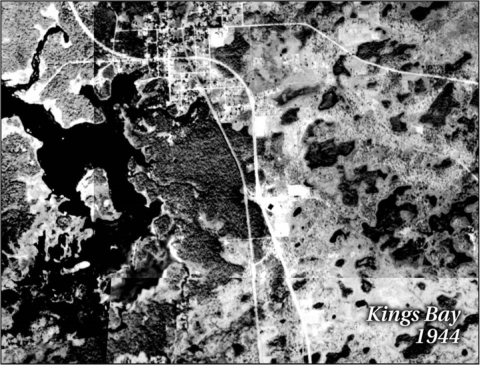Visit Us
National wildlife refuges offer us all a chance to unplug from the stresses of daily life and reconnect with our natural surroundings.
Crystal River, one hour north of Tampa on the Gulf Coast is the only wildlife refuge dedicated to the protection of the West Indian manatee. There are several ways to enjoy the refuge. You can explore the displays at the visitor’s center located on Kings Bay where volunteer staff will answer questions. You can visit the Three Sisters Springs property to walk the boardwalk and view the springs or enjoy the trails. To swim or paddle in the Three Sisters Springs, you can rent a vessel/paddle craft or bring your own and launch at a nearby boat ramp. Visitors can even put on a wetsuit and snorkel to immerse themselves in the underwater world of the manatee.
Explore our Visitor Center and Nature Store to learn about manatees and their habitat.
Crystal River National Wildlife Refuge Complex Headquarters
1502 SE Kings Bay Drive
Crystal River, FL 34429-4661
Visitor Center and Nature Store hours 9:00 to 4:00 daily
Programs are offered daily at Three Sisters Springs. Visit the Ranger-led Program page to learn more.
Activities
Crystal River NWR has several activities available to visitors such as wildlife viewing, interpretation, guided tours, environmental education, boating/paddling, fishing and photography.
Know Before You Go
Crystal River NWR is mostly accessible to visitors by water only. Only the Three Sisters Springs property provides land access via shuttle service, but no access to the water is provided at this site. The refuge doesn’t offer any water-access facilities. However, there are a few, free City boat ramps and private ramps (with a fee) that provide access to refuge waters. If you are interested in visiting other parts of the refuge (other than Three Sisters Springs boardwalk), you can use your own vessel, rent a vessel, or join a guided tour. The Refuge does not provide Guided Manatee tours, however, special use permits are granted to tour operators in Kings Bay who offer quality guided tours in Refuge waters. Click here for a current list of Refuge Special Use Permit holders who offer several different types of rentals and guided tours. However you choose to meet a manatee, remember to keep calm and enjoy the moment! It’s a privilege and responsibility to make sure we treat this beloved threatened species with the utmost care and respect.
The manatee season at Crystal River NWR begins in mid-November and ends in late March. This is when the manatee sanctuaries go into effect. During the winter months, manatees come to the springs of Crystal River NWR to conserve the energy necessary to survive the cold Gulf waters. Remember when you are visiting Crystal River, you are visiting the manatees home. The Manatee Manners videos are designed to provide visitors with the necessary awareness that prevents disturbing manatees while engaging in different recreational activities. Please view "Manatee Manners" before initiating any recreation activity in Kings Bay.
Trails
Three Sisters Springs is a 57 acre with over 2 miles of trails. Refuge trails and the boardwalk provide family-friendly wildlife and springs viewing areas. All trails have very little elevation gain, offering easy walks without losing any of the natural opportunities. Need help navigating? Refer to the map provided by the Three Sisters Springs Center or the Gatehouse.
For trail lengths:
- Three Sisters Springs Boardwalk
Length: 0.25 mile handicap accessible
- Red Cedar Trail
Length: 0.25 mile (Handicap accessible)
- Wetland Walk
Length: 0.50 mile
- Sweet Gum Trail
Length: 0.37 mile
- Magnolia Spring Loop
Length: 0.50 mile
- Trail to pavilion
Length: 0.10 mile (Handicap accessible)
All trails are open from 8:30am to 4:30pm year-round, except for Good Friday, Memorial Day, Independence Day, Labor Day, Veteran’s Day, Thanksgiving, and Christmas. The skill level of all trails is easy with no elevation gain. The trails are gravel or grass with the exception of the boardwalk. Entrance fee applies.
Related Documents
Other Facilities in the Complex
Three Sisters Springs Unit
History, Acquisition and Current Partnership
- Citrus County fishermen, as far back as the 1920’s, piloted wooden skiffs up a long and winding creek from Kings Bay to Three Sisters armed with their fishing poles and empty jugs to fill with spring water.
Three Sisters Springs was documented in a 1944 aerial photography prior to development (see image to right). At that time, the Three Sisters Springs group discharged to Kings Bay through a long (more than 3,200 feet), non-navigable, heavily wooded, shallow, braided and poorly defined spring run (creek)
- A local dive shop offered tours into Three Sisters Springs on glass bottom sightseeing boats in the 1950’s.
- A canal was constructed in the 1960’s to allow for navigable access to Three Sisters Springs.
- Sewer Sam, the first documented, rescued Florida manatee, was rehabilitated at Three Sisters Springs in 1972 by Jacques Cousteau. The story of Sewer Sam can be seen in the documentary, The Forgotten Mermaid.
- Pilings were placed at the entrance to Three Sisters Springs in 1982 to limit vessel traffic; the spring run was also lined with large boulders.
- Three Sisters Springs was a naturally a forested wetland. In the 1970s, most trees were removed, and an 8-acre pit (originally named Lake Linda and now named lake Crystal) was dug. It collapsed into the aquifer at approximately 40 feet deep. The excavated material was used to provide fill for the entire property.
- The Three Sisters Springs property was to be developed with condos and townhouses, and water was to be commercially extracted and bottled from the springs.
- In 2008, The Friends of Crystal River NWR Complex began efforts to save Three Sisters Springs from development. Following a successful partnership consisting of state, federal and local organizations, the Three Sisters Springs property was purchased for 10.5 million: approximately two million less than fair market value.
- Three Sisters Springs is now jointly owned by the city of Crystal River and the Southwest Florida Water Management District (SWFWMD).
- The U.S. Fish and Wildlife Service (USFWS), under a lease agreement with the City of Crystal River, manages Three Sisters Springs as part of the Crystal River National Wildlife Refuge.
- Three Sisters Springs opened to the public in November 2014 after improvements to the gate and existing limestone road were made.
- The SWFWMD restored some of the original wetlands to filter runoff from US 19. This project began in the fall of 2014 and was finished by 2015.
- The following have already taken place at Three Sisters Springs since the acquisition in 2010:
- Boulder removal along spring run, to provide for manatee access during low tides
- Construction of boardwalk
- Construction of a pavilion
- Exotic vegetation removal
- Improvement of unpaved access road
- Placement of two temporary parking lot
- Planting of native trees around the springs
- Placement of regulation signs
- Public Use Surveys
- Conceptual plan design for facilities
- Open House events including National Wildlife Refuge Day celebration, Manatee Fest and other events hosted by the Friends of Crystal River NWR
- Erosion stabilization at TSS:
- Bathrooms and other facilities: There are $1.2 million available for infrastructure facilities at Three Sisters Springs – to begin in 2014.
- The following future facilities and projects are planned and awaiting funding:
- Bank stabilization project of the canal in front of the Three Sisters Springs Complex
- Building of viewing platforms over Magnolia Springs at the north side of the property
- Creating a pollinator garden to support native species
- Building an ADA compliant fishing pier at Lake Crystal
- Construction of an Environmental Education Facility
Rules and Policies
The operation of unmanned aircraft/drones on national wildlife refuges is prohibited. Drone users cannot 1) fly drones at “altitudes resulting in harassment of wildlife” or take-off or land drones within refuge boundaries under 50 C.F.R. § 27.34; 2) use drones to harass wildlife under 50 C.F.R. § 27.51; or 3) operate, launch from, or land drones on refuge-administer lands for the purpose of taking commercial photography under 50 C.F.R. § 27.71, without a permit in accordance with 43 C.F.R. Part 5.
Locations



















- From the north, turn right off Highway 19 onto SE Paradise Point Road. Follow the road until it curves to the right. The refuge parking lot will be on the right.
- From the south, turn left off Highway 19 on Fort Island Trail, then right onto Three Sister Springs Drive. At the first stop sign turn left onto Paradise Point Road. Travel three blocks until the road curves to the right . The refuge parking lot will be on the right.
